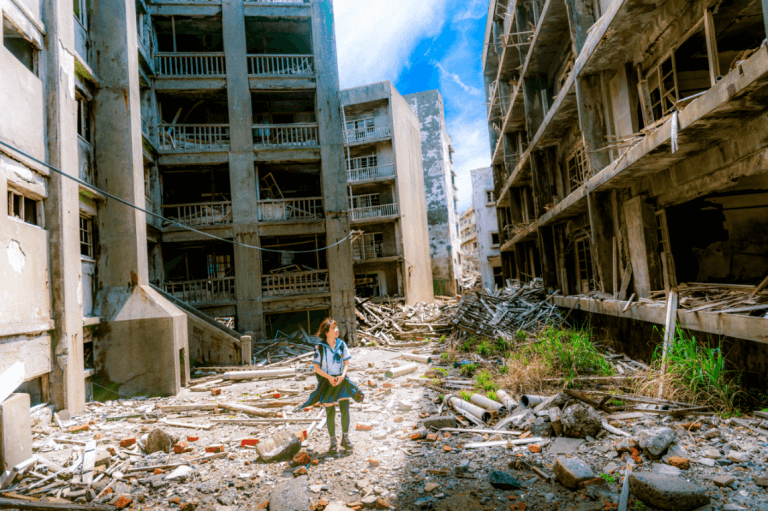How Do You Treat Post-Traumatic Stress Disorder?

We’ve all heard about post-traumatic stress disorder and know how much suffering it entails. Rapes, muggings, wars, and terrorist attacks are just a few examples of the type of events that could trigger post-traumatic stress disorder. But PTSD isn’t solely caused by man-made situations. Natural disasters, such as hurricanes or earthquakes, can also bring it about. The question is, how do you treat it?
“Each war is a destruction of the human spirit.”
-Henry Miller-
Treating post-traumatic stress disorder: psycho-education and breathing
When you suffer from PTSD, the first thing you have to do is see a good psychologist. Cognitive-behavioral approaches have the most empirical support. Therefore, we recommend finding a highly qualified CBT psychologist.
They’ll perform an initial evaluation, which is a vital part of understanding the patient’s issues. Then, it’s important that he carry out psychoeducation. He will explain to the patient what is happening in terms that the patient will understand. He must emphasize the symptoms the person is experiencing and indicate why they appear, what maintains them, and how they will be treated.

The objective is for the individual to understand what is happening to him as much as possible. He should understand why and how the professional will attempt to solve it. This is essential for patients to adhere to their treatment. The next step is learning how to relax.
If you train the patient in the practice of abdominal breathing, you will be providing them with a simple and very useful tool that they’ll be able to use whenever anxiety strikes. Anxiety is a trademark of the disorder. Once the patient has learned this technique and feels comfortable with it, it’s important that they practice it continuously from then on.
“Sometimes, the most productive thing you can do is relax.”
-Mark Black-
Next steps in PTSD treatment
Apart from giving them tools to use when their anxiety spikes, it’s important to work on other aspects. However, they may not always be visible. Here we’re referring to thoughts and beliefs associated with the triggering event. If you don’t address that, treatment will be incomplete. It would be like a band-aid.
Hence the importance of teaching the patient to identify the ideas that go through their mind. That is, they have to learn to locate their automatic thoughts and irrational beliefs. They may revolve around messages like the following:
- What happened was my fault.
- I’ll never be able to overcome it.
- The world is a dangerous place and the event is going to repeat itself.
This takes us to the first step of cognitive restructuring. Then, through Socratic dialogue, this will all be questioned. This way, session by session, the individual will learn to knock down the ideas that are sustaining the disorder.

Completing treatment
For the treatment of post-traumatic stress disorder to be complete, something else must be added. Since they tend to avoid everything associated with the dangerous situation or event, it’s important to work on exposure, both in their imagination and real life.
Through this, they will manage to lower their anxiety by becoming accustomed to the situation. Also, they will learn that remembering the episode doesn’t mean they have to relive it. Just like they don’t necessarily have to lose control. On the other hand, this will allow them to differentiate between the traumatic event and other, safe events.
The idea is that what happened to them was concrete and specific, not a probable or general fact. Lastly, it will increase their sense of self-control, as well as help them see themselves as more capable of managing the situation.
To conclude, as with all anxiety issues, it’s important to include relapse prevention in the treatment of post-traumatic stress disorder. This last step is fundamental. It will help solidify the progress and empower the patient.
We’ve all heard about post-traumatic stress disorder and know how much suffering it entails. Rapes, muggings, wars, and terrorist attacks are just a few examples of the type of events that could trigger post-traumatic stress disorder. But PTSD isn’t solely caused by man-made situations. Natural disasters, such as hurricanes or earthquakes, can also bring it about. The question is, how do you treat it?
“Each war is a destruction of the human spirit.”
-Henry Miller-
Treating post-traumatic stress disorder: psycho-education and breathing
When you suffer from PTSD, the first thing you have to do is see a good psychologist. Cognitive-behavioral approaches have the most empirical support. Therefore, we recommend finding a highly qualified CBT psychologist.
They’ll perform an initial evaluation, which is a vital part of understanding the patient’s issues. Then, it’s important that he carry out psychoeducation. He will explain to the patient what is happening in terms that the patient will understand. He must emphasize the symptoms the person is experiencing and indicate why they appear, what maintains them, and how they will be treated.

The objective is for the individual to understand what is happening to him as much as possible. He should understand why and how the professional will attempt to solve it. This is essential for patients to adhere to their treatment. The next step is learning how to relax.
If you train the patient in the practice of abdominal breathing, you will be providing them with a simple and very useful tool that they’ll be able to use whenever anxiety strikes. Anxiety is a trademark of the disorder. Once the patient has learned this technique and feels comfortable with it, it’s important that they practice it continuously from then on.
“Sometimes, the most productive thing you can do is relax.”
-Mark Black-
Next steps in PTSD treatment
Apart from giving them tools to use when their anxiety spikes, it’s important to work on other aspects. However, they may not always be visible. Here we’re referring to thoughts and beliefs associated with the triggering event. If you don’t address that, treatment will be incomplete. It would be like a band-aid.
Hence the importance of teaching the patient to identify the ideas that go through their mind. That is, they have to learn to locate their automatic thoughts and irrational beliefs. They may revolve around messages like the following:
- What happened was my fault.
- I’ll never be able to overcome it.
- The world is a dangerous place and the event is going to repeat itself.
This takes us to the first step of cognitive restructuring. Then, through Socratic dialogue, this will all be questioned. This way, session by session, the individual will learn to knock down the ideas that are sustaining the disorder.

Completing treatment
For the treatment of post-traumatic stress disorder to be complete, something else must be added. Since they tend to avoid everything associated with the dangerous situation or event, it’s important to work on exposure, both in their imagination and real life.
Through this, they will manage to lower their anxiety by becoming accustomed to the situation. Also, they will learn that remembering the episode doesn’t mean they have to relive it. Just like they don’t necessarily have to lose control. On the other hand, this will allow them to differentiate between the traumatic event and other, safe events.
The idea is that what happened to them was concrete and specific, not a probable or general fact. Lastly, it will increase their sense of self-control, as well as help them see themselves as more capable of managing the situation.
To conclude, as with all anxiety issues, it’s important to include relapse prevention in the treatment of post-traumatic stress disorder. This last step is fundamental. It will help solidify the progress and empower the patient.
This text is provided for informational purposes only and does not replace consultation with a professional. If in doubt, consult your specialist.







